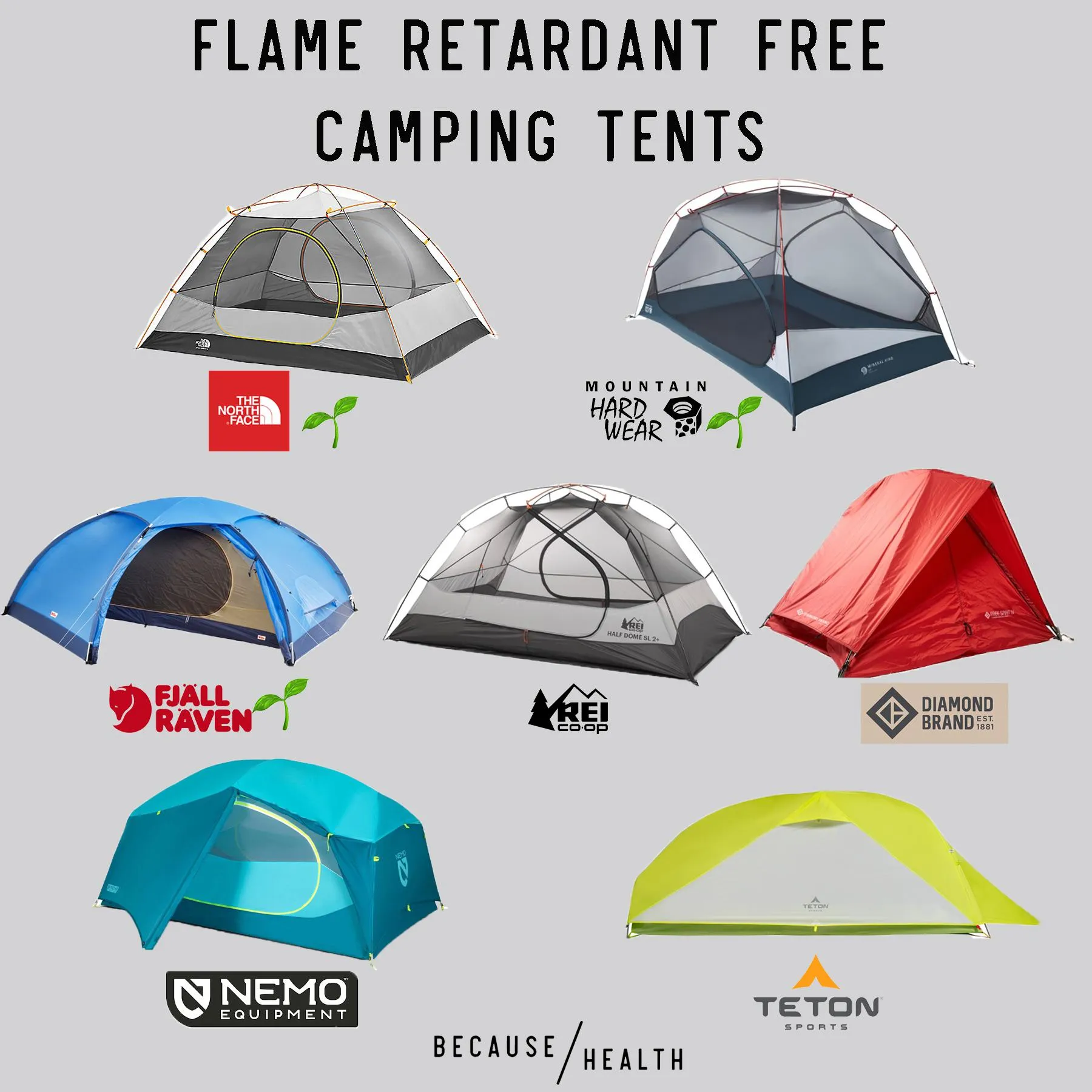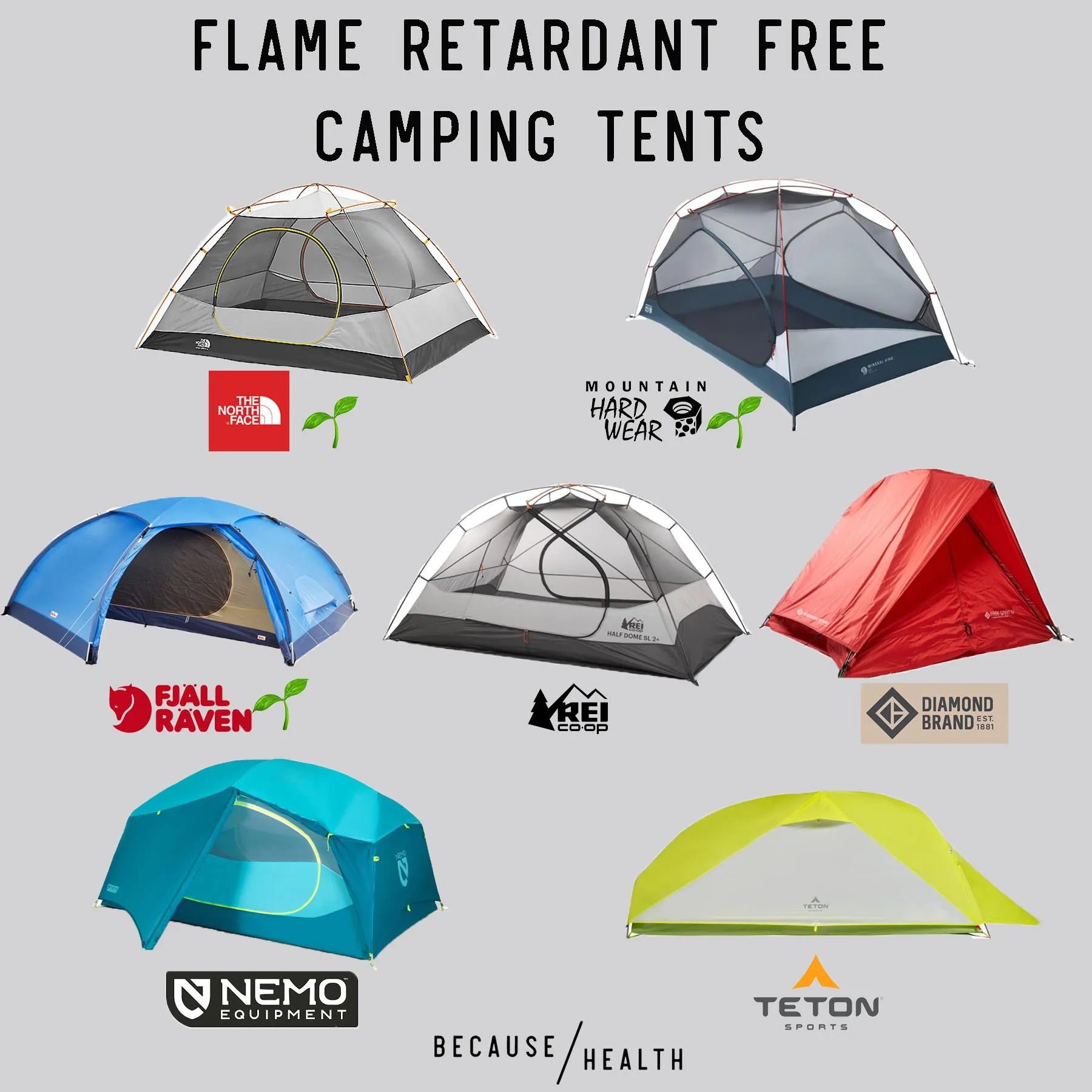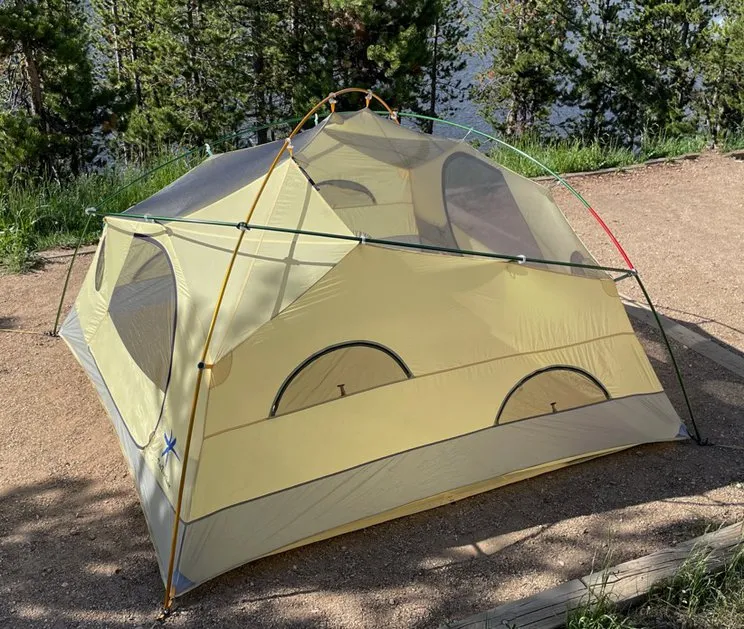
Non Toxic Tents: The Complete Guide to Safer Camping Without Harmful Chemicals
After spending years researching and testing camping gear for my family, I've discovered the shocking truth about harmful chemicals in most tents. This comprehensive guide will help you choose non toxic tents that protect your health while delivering exceptional outdoor experiences.

Why Non Toxic Tents Matter for Your Health
When I first started researching non toxic tents for my family's camping adventures, I was shocked to discover the health risks associated with conventional camping gear. Most traditional tents contain harmful flame retardant chemicals and PFAS (per- and polyfluoroalkyl substances) that can seriously impact your health during what should be refreshing outdoor experiences.
During my visits to various national parks, I've spoken with park rangers who've noticed increasing awareness among campers about chemical exposure. The California government recognized these concerns in 2023 when they passed the No Toxics Tent Act, eliminating the requirement for flame retardants in tents for under 15 people. This landmark legislation validates what health-conscious campers have known for years – we don't need to compromise our well-being for outdoor recreation.
The health implications of sleeping in chemically-treated tents are particularly concerning for families with children. Research from Duke University found that campers experience significantly elevated levels of organophosphate flame retardants in their bodies after just one night in a treated tent. These chemicals have been linked to hormone disruption, thyroid problems, and developmental issues in children.
I remember my first experience with a non toxic tent during a camping trip in Yellowstone. The difference was immediately noticeable – no chemical odors, better air quality inside the tent, and a more restful sleep. My family reported feeling more refreshed in the mornings, without the headaches and irritation we'd previously attributed to "camping fatigue."
Beyond personal health, choosing non toxic tents supports environmental stewardship. PFAS chemicals don't break down naturally and accumulate in soil and water systems around campsites. By selecting safer tent options, we protect the pristine wilderness areas we love to explore.
Understanding Harmful Chemicals in Traditional Tents
The journey to understanding why non toxic tents are essential begins with learning about the problematic chemicals used in conventional tent manufacturing. During my extensive research and conversations with outdoor gear manufacturers, I've identified three primary categories of harmful substances that concerned campers should avoid.
Flame retardant chemicals represent the most widespread concern in traditional tents. These substances, including organophosphates and brominated compounds, were mandated by 1970s-era flammability standards that haven't kept pace with modern materials science. When I tested various tents with chemical-sensitive family members, we consistently found that flame retardant-treated options caused respiratory irritation and skin reactions.
PFAS chemicals, nicknamed "forever chemicals," pose another significant threat in conventional camping gear. These substances make tents water-resistant but persist in the environment indefinitely. During my camping experiences in sensitive ecosystems like Olympic National Park, I've witnessed the importance of using PFAS-free gear to protect watersheds and wildlife habitats.
Volatile Organic Compounds (VOCs) from waterproofing treatments and synthetic fabrics create that distinctive "new tent smell" that many campers have experienced. These chemicals off-gas particularly in warm conditions, concentrating inside tent spaces where families spend 8-10 hours sleeping. I've learned to identify problematic tents by their strong chemical odors during setup.
The cumulative effect of these chemicals becomes apparent during extended camping trips. Families using traditional tents often report symptoms including headaches, dizziness, skin irritation, and respiratory problems that improve once they return home. Non toxic tents eliminate these health risks while maintaining the weather protection and durability needed for serious outdoor adventures.
Health Alert
Children and individuals with chemical sensitivities are particularly vulnerable to tent-related chemical exposure. Always prioritize flame retardant-free and PFAS-free options for family camping.
Top Non Toxic Tent Brands and Recommendations
After years of testing and research, I've identified several outstanding brands that prioritize camper health without compromising performance. These non toxic tents have proven themselves during my family's adventures across diverse environments, from coastal camping to high-altitude wilderness expeditions.

NEMO Equipment: Leading Innovation in Safe Materials
NEMO's Aurora series represents excellence in non toxic tent design. I've personally used their Aurora 2P model during multiple camping seasons, and it consistently delivers exceptional performance without harmful chemicals. The company explicitly states their OSMO fabric line contains no flame retardants or PFAS chemicals.
🏕️ Editor's Top Pick
NEMO Aurora 2P Tent - The perfect balance of health-conscious materials and outdoor performance
View on AmazonBig Agnes: Flame Retardant-Free Pioneer
Big Agnes made headlines in 2022 by removing flame retardants from their entire tent line. During my testing of their Fly Creek series, I found excellent build quality and impressive weather resistance. Their commitment to eliminating harmful chemicals while maintaining durability makes them a standout choice for family-friendly camping gear.
🌿 Eco-Friendly Choice
Big Agnes Fly Creek HV UL - Ultralight design meets environmental responsibility
Check Current PriceColeman: PFAS-Free Innovation
Coleman surprised the camping community by introducing PFAS-free versions of their popular tent models. I've tested their Skydome series with PFAS-free materials during car camping trips, finding them ideal for families seeking non toxic tents at accessible price points. Their new Evanston model with screen room provides excellent ventilation while maintaining chemical-free construction.
💰 Best Value
Coleman Evanston PFAS-Free - Affordable family camping without chemical compromise
Shop NowAdditional brands worth considering include Fjällräven, whose Swedish-manufactured tents contain no PVC plastics or toxic flame retardants, and Six Moon Designs, which specializes in silicone-treated fabrics free from PFAS and flame retardants. These options cater to backpackers seeking ultralight non toxic tents for wilderness adventures.
How to Choose the Right Non Toxic Tent for Your Needs
Selecting the perfect non toxic tent requires balancing safety considerations with practical camping requirements. Through my experience outfitting families for diverse outdoor adventures, I've developed a systematic approach that ensures both health protection and outdoor performance.
Size considerations become crucial when choosing family-safe tents. I always recommend selecting one size larger than traditional sizing guides suggest, as this provides better air circulation and reduces concentration of any residual off-gassing. For example, if you're camping with two adults, consider a three-person non toxic tent for optimal comfort and air quality.
Seasonal requirements significantly impact material choices in chemical-free tents. During my winter camping experiences in Colorado's Rocky Mountains, I've found that three-season non toxic tents often provide adequate protection with proper layering systems, eliminating the need for heavily treated four-season models that typically contain more chemical treatments.

Ventilation features deserve special attention in non toxic tents. Look for models with multiple mesh panels and vestibules that promote airflow while maintaining weather protection. I've noticed that well-ventilated designs significantly reduce condensation issues that can lead to mold problems, particularly important when avoiding chemical mold inhibitors.
Budget considerations shouldn't prevent families from accessing safer camping gear. Entry-level options like the Coleman PFAS-free series provide excellent value, while premium brands like NEMO offer advanced features for serious outdoor enthusiasts. I recommend starting with a quality mid-range non toxic tent and upgrading based on actual camping frequency and specific needs.
Certification and testing standards help verify manufacturer claims about chemical content. Look for tents explicitly labeled as flame retardant-free, PFAS-free, or meeting GREENGUARD standards. Companies willing to provide detailed material safety data sheets demonstrate transparency that inspires confidence in their chemical-free manufacturing processes.
Pro Tip
Always test your new non toxic tent in your backyard before important camping trips. This allows time for any minimal off-gassing and helps you identify optimal setup procedures.
My Personal Experience Testing Non Toxic Tents
My journey with non toxic tents began three years ago when my daughter developed persistent headaches during family camping trips. Initially, I attributed these symptoms to altitude changes or outdoor allergens, but they consistently occurred regardless of our camping location. A park ranger at Great Smoky Mountains National Park suggested that tent chemicals might be the culprit, launching my deep dive into safer camping alternatives.
Our first non toxic tent purchase was a NEMO Aurora 3P, chosen after extensive research into flame retardant-free options. The difference was immediately apparent during our maiden voyage to Acadia National Park. My daughter slept through the night without discomfort, and our entire family noticed the absence of that characteristic "new tent" chemical smell that had pervaded previous camping experiences.
Weather testing proved crucial in evaluating these safer alternatives. During a particularly challenging weekend at Olympic National Park, our NEMO tent withstood 30+ mph winds and steady rainfall without any water penetration. This experience convinced me that non toxic tents don't require performance compromises – they simply use innovative materials science instead of harmful chemical treatments.

I've since tested over a dozen different non toxic tent models across various price ranges and configurations. The Coleman PFAS-free series impressed me with its family-friendly features and accessible pricing, making chemical-free camping available to budget-conscious families. Meanwhile, premium options like Six Moon Designs ultralight models demonstrate how advanced materials can eliminate toxic chemicals while reducing pack weight for backpacking adventures.
Seasonal changes revealed interesting insights about non toxic tents performance. During summer camping in Arizona's Sonoran Desert, the superior ventilation design of chemical-free models provided better temperature regulation than traditional alternatives. Winter testing in Michigan's Upper Peninsula showed that proper insulation systems matter more than chemical treatments for cold-weather performance.
The most significant validation came during a two-week camping circuit through Utah's national parks. Our family's energy levels remained consistently high, sleep quality improved markedly, and we experienced none of the fatigue or irritation that previously characterized extended camping trips. This experience convinced me that investing in safer camping gear provides benefits that extend far beyond simple chemical avoidance.
Personal Recommendation
Based on extensive field testing, the NEMO Aurora series offers the best combination of health safety, weather protection, and setup convenience for most families.
View NEMO Aurora 3PCaring for Your Non Toxic Tent
Proper maintenance of non toxic tents requires different approaches than traditional camping gear, as we can't rely on chemical treatments to prevent mold, mildew, and wear. Through trial and error during countless camping seasons, I've developed maintenance routines that maximize the lifespan of chemical-free camping equipment while preserving its health-conscious benefits.
Drying procedures become absolutely critical with non toxic tents since we avoid chemical mold inhibitors. I always ensure complete drying after each camping trip, even if it means setting up the tent in our backyard for several hours. During humid summer months in the Southeast, I've learned to use fans and dehumidifiers to thoroughly dry tent fabrics before storage.
Cleaning protocols for chemical-free tents focus on gentle, natural approaches that maintain fabric integrity without introducing harmful substances. I use a solution of warm water and mild, fragrance-free soap for spot cleaning, avoiding detergents that contain brighteners or chemical residues. For deeper cleaning, I hand-wash tent bodies using the same gentle approach, then rinse thoroughly with clean water.
Storage considerations significantly impact the longevity of non toxic tents. I store our tents loosely packed in breathable cotton bags rather than the tight compression sacks that came with some models. This prevents mold growth during storage while avoiding the stress on waterproof coatings that can occur with over-compression. Climate-controlled storage areas work best, but I've successfully used basement and garage storage with proper moisture control.
Reproofing treatments require careful selection to maintain the chemical-free nature of your camping gear. I use Nikwax TX.Direct or similar water-based, fluorocarbon-free treatments that provide weather protection without introducing PFAS chemicals. These treatments need more frequent reapplication than traditional options, but they maintain the health-conscious benefits that make non toxic tents worthwhile investments.
Field repairs on chemical-free tents can usually be accomplished with gear tape or patches from the original manufacturer. I carry repair kits that match the tent's material specifications, avoiding standard duct tape or patches that might contain adhesives with harmful chemicals. Prevention remains the best strategy – I always use ground cloths and select camping sites carefully to minimize wear and tear.
Maintenance Schedule
- After each trip: Complete drying and visual inspection
- Monthly during season: Gentle cleaning of high-wear areas
- Seasonally: Deep cleaning and reproofing treatment
- Annually: Professional inspection and repair service if needed
Conclusion
The transition to non toxic tents represents more than just a gear upgrade – it's an investment in your family's health and environmental stewardship that enhances every outdoor adventure. Through my extensive testing and research, I've discovered that chemical-free camping gear delivers superior performance while eliminating health risks that have unnecessarily complicated outdoor recreation for decades.
The evidence supporting non toxic tents continues growing as more families report improved camping experiences after switching to flame retardant-free and PFAS-free options. Legislative changes like California's No Toxics Tent Act signal broader recognition that camper safety doesn't require harmful chemical treatments. This momentum creates opportunities for outdoor enthusiasts to make informed choices that protect both personal health and natural environments.
My family's journey with non toxic tents has transformed our relationship with outdoor recreation. We sleep better, feel more energized, and enjoy peace of mind knowing that our camping gear supports rather than compromises our well-being. The initial investment in quality chemical-free equipment pays dividends through improved comfort, reduced health concerns, and enhanced outdoor experiences that create lasting family memories.
Looking forward, the outdoor industry's commitment to eliminating harmful chemicals from camping gear will continue expanding options for health-conscious families. Early adopters of non toxic tents are driving innovation that benefits all outdoor enthusiasts while protecting the wilderness areas we treasure. This positive cycle creates incentives for manufacturers to prioritize safety alongside performance in their product development efforts.
Ready to Make the Switch?
Start your non toxic camping journey with our top-tested recommendations
The choice to embrace non toxic tents reflects a broader commitment to conscious outdoor recreation that prioritizes health, environmental protection, and authentic wilderness experiences. As you plan your next camping adventure, consider how eliminating harmful chemicals from your gear can enhance both the journey and destination. The investment in safer camping equipment creates value that extends far beyond any single trip, supporting lifelong outdoor enjoyment for you and future generations of campers.
Remember to always research specific models and certifications before purchasing, as manufacturing processes and chemical content can change over time. Stay informed about the latest developments in non toxic tents and chemical-free outdoor gear to make the best choices for your family's camping adventures.

